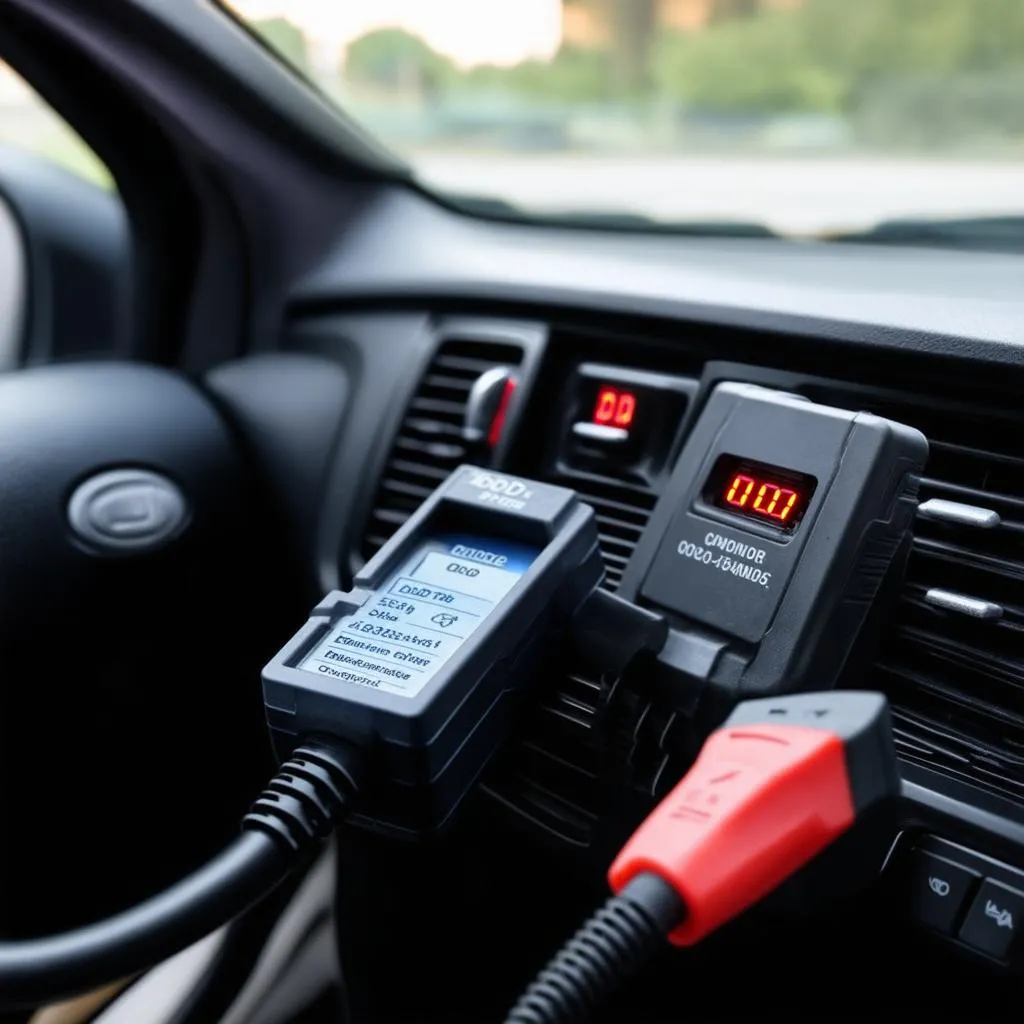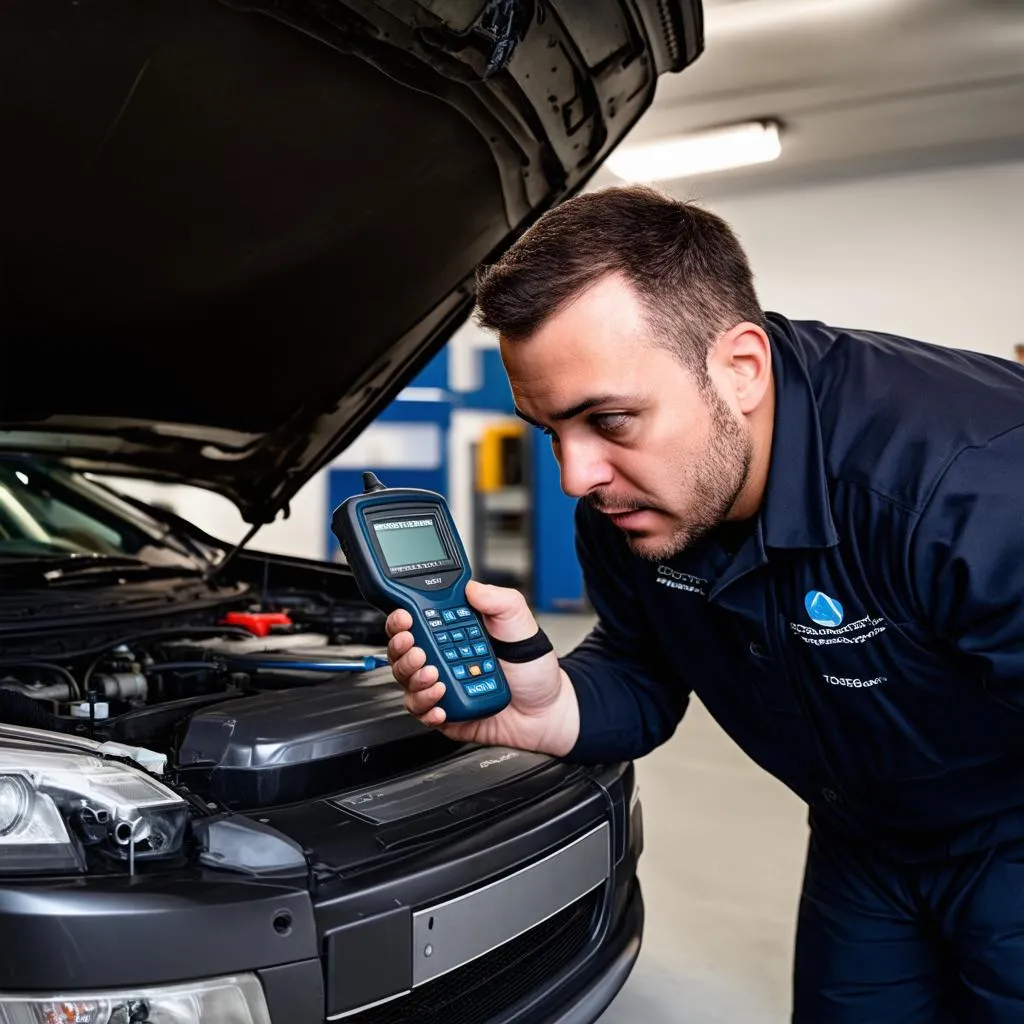“Check Engine” – a phrase that strikes fear into the heart of any car owner. It’s like a cryptic message from your car, whispering, “Something’s wrong, but I’m not telling you what.” The good news is, your car isn’t trying to be cryptic. It’s speaking through a language called OBD II, and with a generic OBD II code reader, you can decipher the message and potentially save yourself a lot of time, money, and worry.
What Exactly Are Generic OBD II Codes?
Imagine your car’s computer system as a bustling city. Every component, from the engine to the airbags, is like a building with its own set of alarm systems. When something goes awry, an alarm triggers, sending a distress signal – a generic OBD II code – to the city center, which is your car’s computer.
These codes are standardized across most cars made after 1996, thanks to a mandate by the U.S. Environmental Protection Agency. Think of them as a universal language that any mechanic, and even you, can understand with the help of a code reader.
But what makes them “generic”? Well, while car manufacturers might have their own specific codes, generic OBD II codes cover common issues across the board. They are the first line of diagnosis, pointing towards the general area of concern within your car’s various systems.
 OBD2 code reader plugged into a car's OBD2 port
OBD2 code reader plugged into a car's OBD2 port
Diving Deeper: Decoding the Code
You’ve plugged in your trusty code reader and see a string of letters and numbers staring back at you. Don’t panic! Here’s a quick breakdown:
-
The First Character: This is always a letter, indicating the system the code relates to. For example:
- P: Powertrain (engine, transmission, fuel system)
- B: Body (airbags, power windows, central locking)
- C: Chassis (ABS, traction control)
- U: Network & Communication (modules, sensors)
-
The Second Character: This number tells you whether the code is generic (0) or manufacturer-specific (1).
-
The Third Character: This number points to the specific subsystem within the broader category.
-
The Last Two Characters: These represent the specific fault within that subsystem.
So, a code like P0301 would translate to:
- P: Powertrain
- 0: Generic code
- 3: Ignition system or misfire
- 01: Cylinder 1 misfire detected
Why Should You Care About Generic OBD II Codes?
Remember that “Check Engine” light? Ignoring it is like ignoring a smoke detector. It might be nothing, but it could also be a sign of a serious problem brewing. Here’s where understanding generic codes can be a game-changer:
- Early Detection: Just like in Eastern medicine, where early diagnosis is key to restoring balance and harmony in the body, catching car issues early can prevent costly repairs down the line. A simple code scan can reveal a loose gas cap (a surprisingly common issue) before it turns into an expensive emissions system problem.
- Empowerment: Knowing the codes puts you in the driver’s seat (pun intended!). You can research the issue, understand its potential severity, and make informed decisions about repairs.
- Peace of Mind: For many, a car is more than just a machine. It’s a symbol of freedom and independence. Knowing you can understand its language and address potential problems brings peace of mind, letting you enjoy those open roads with confidence.
 Mechanic using an OBD2 scanner on a car
Mechanic using an OBD2 scanner on a car
Beyond the Codes: When to Seek Professional Help
While generic OBD II codes are incredibly useful, it’s important to remember they are just the first step in diagnosis. They highlight the symptom, not always the root cause.
Think of it like feeling a headache. You know something is off, but it could be anything from dehydration to stress to something more serious. Similarly, a code indicating a misfire could be caused by a faulty spark plug, a bad ignition coil, or even a deeper engine issue.
Here are some signs it’s time to call in the pros:
- Recurring Codes: If a code keeps popping up after you’ve addressed the initial issue, it’s time for a deeper dive.
- Multiple Codes: Seeing a string of codes, especially across different systems, can indicate a complex issue best diagnosed by a professional.
- Severe Symptoms: If your car is experiencing significant performance issues, strange noises, or warning lights beyond the “Check Engine” light, don’t delay professional help.
Want to learn more about OBD readers?
Check out our other resources:
Get Expert Help with Your Car Diagnostics
Need help deciphering those codes or want expert advice on car diagnostics? We’re here to help! Contact us on Whatsapp at +84767531508 for 24/7 support from our team of experienced auto repair specialists. Let’s get your car back in tip-top shape and you back on the road with confidence!